Interview hit the Belarusian and Russian news cycles but garnered moderate number of views online

Banner: Belarusian journalist Roman Protasevich, detained last month after his flight was forced to land in Minsk, reacts during an interview with Belarusian state television. (Source: ONT TV Channel/Handout via REUTERS)
Belarusian and Kremlin media used various formats to promote a video “interview” with Roman Protasevich, the opposition journalist detained by the Belarusian KGB after his plane from Athens to Vilnius was forced to land in Minsk due to an alleged bomb threat. Amid this information campaign, only Belarus state-owned media had access to Protasevich, as neither his lawyer nor his parents could visit him.
On June 3, 2021, Belarus public broadcast TV channel ONT aired the footage, in which the opposition journalist pled guilty for organizing mass protests, smeared the Belarusian opposition and praised Lukashenka for his “steel balls.” Many independent media outlets in Western countries, Belarus, and Russia called the interview highly unreliable, as Protasevich and his girlfriend, Sofia Sapega, are being detained by Belarusian authorities.
On May 23, Lukashenka ordered the Belarusian Air Force to force a Ryanair flight from Athens to Vilnius to land in Minsk to detain former NEXTA Telagram channel editor Roman Protasevich, along with his girlfriend Sofia Sapega. This act caused outrage in Western countries, followed by EU and U.S. sanctions against key members of the Belarusian government. Belarusian authorities consider Protosevich an extremist, as the NEXTA channel coordinated wide-spread protests in Belarus following the contested Belarusian presidential elections on August 9, 2020. These protests were violently suppressed by Belarusian riot police. There have been multiple reports about human right abuses, including torture in Belarus detention centers. Viasna, the Belarus human rights organization, counted 476 political prisoners in Belarus as of June 10, 2021.
ONT’s self-promotion
ONT, the Belarus public broadcaster, promoted the interview via various means, including its website’s news section and social media. In addition to promoting the full “interview,” the channel posted dozens of soundbites of Protasevich on YouTube, Facebook, VKontakte (VK), and Instagram.
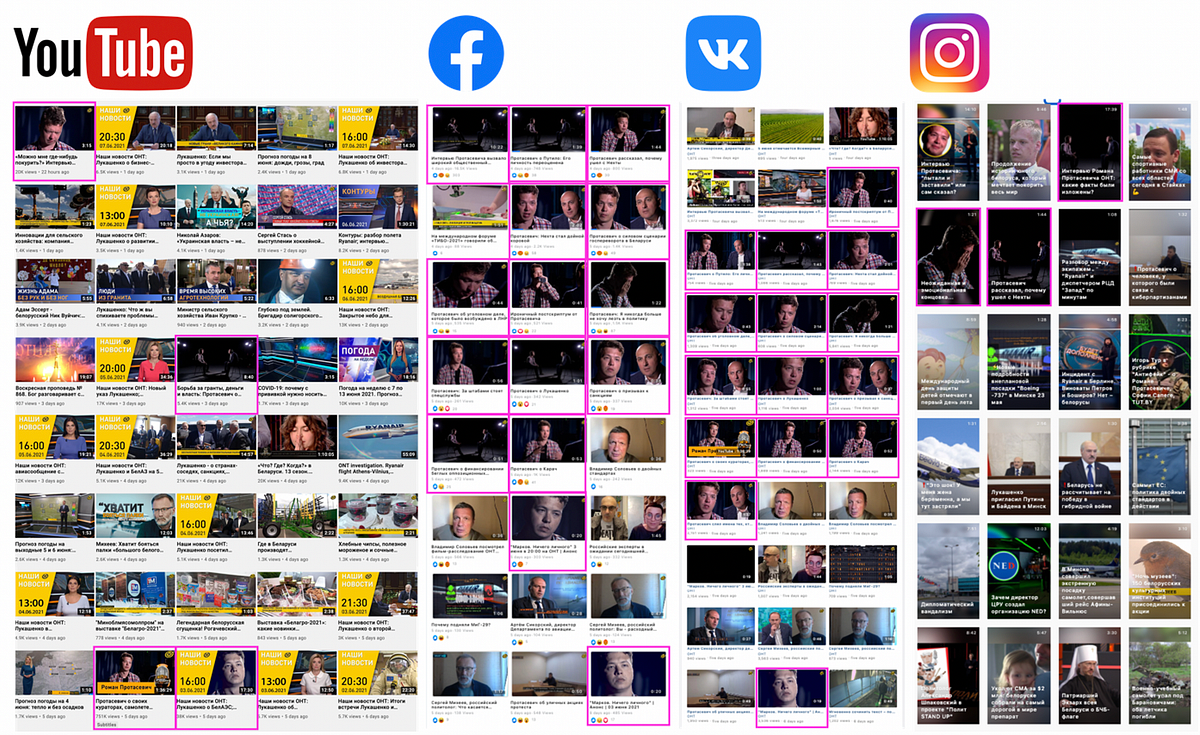
The strategy of cutting the interview into smaller pieces paid off on Facebook. While the highest number of shares a copy of the video received was just 13, all except one video overperformed on ONT’s Facebook page, according to the Facebook analysis tool CrowdTangle. In other words, these video clips garnered more total engagement than the page garners for a post on average.
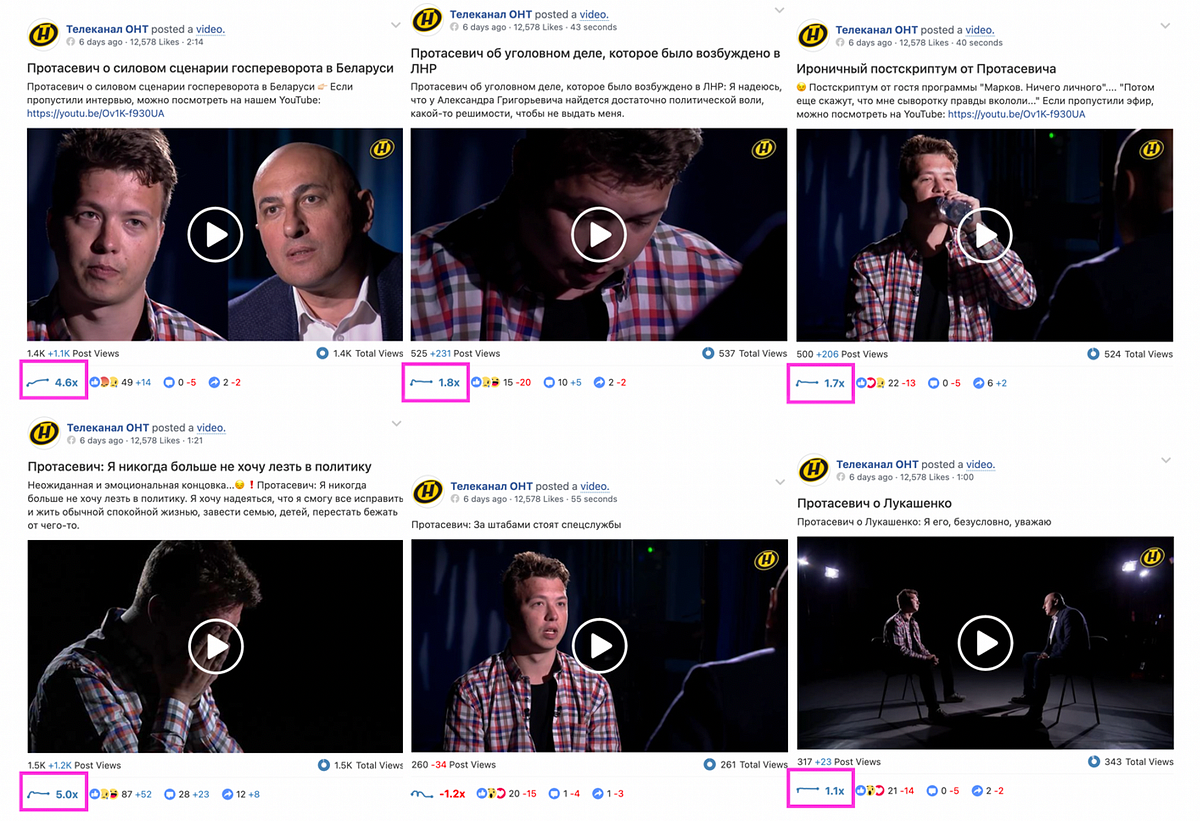
There is no data on whether such videos overperformed on VK, though the average clip on that platform received more than 1,900 views, over twice as high as the average of the Facebook clips.
Belarusian and Russian state-owned outlets cover the interview
Other Belarus state-owned media outlets also promoted the interview. Belta, the Belarus state-owned news agency, followed a similar approach of creating short articles based on soundbites from the video. The outlet published 12 stories in about three hours.
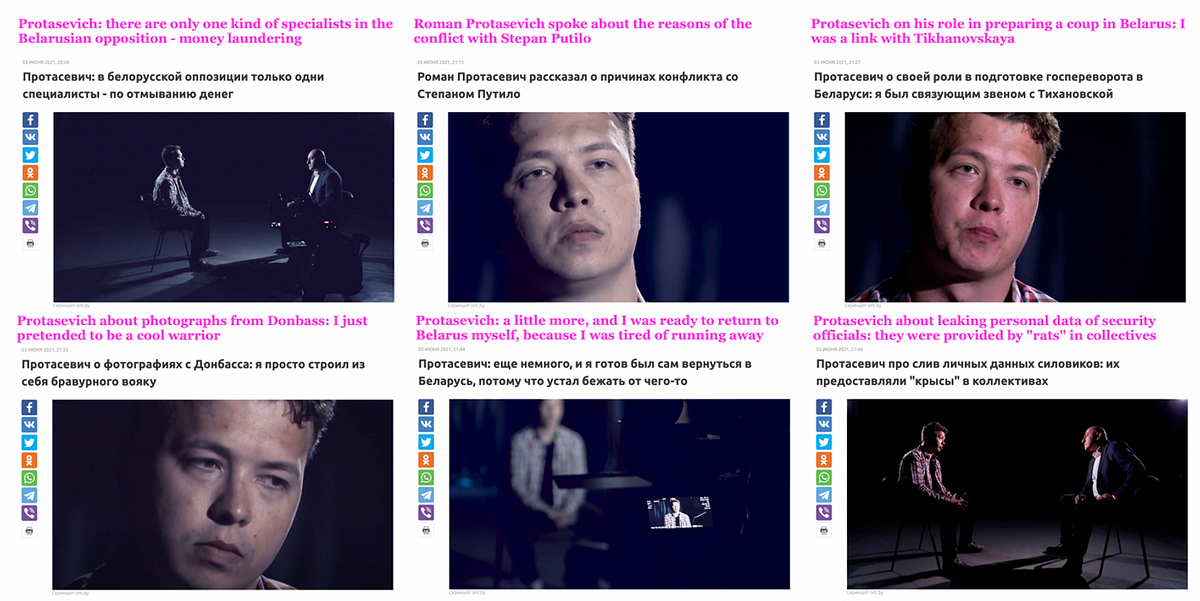
YouTube put restrictions on the ability to view the video on June 5, according to ONT’s Facebook post. Nevertheless, the full version of the video was featured and available on the YouTube channel of ATN, another state-owned TV channel. Belteleradiokamapniya, a state-owned media holding in Belarus, featured a banner that directed to the full interview on ATN’s YouTube channel.

Some Russian state-owned media outlets also covered Protosevich’s statements live. TASS, the Kremlin-owned news agency, produced five stories based on the interview on June 3. Federalnoe Agenstvo Novostey (RIA FAN), the news agency linked to Yevgeny Prigozhin, the Russian oligarch who is accused of meddling in U.S. elections, published eight stories based on the interview with Protasevich. Rosiyskaya Gazeta, the official state newspaper, published three stories based on the interview.
Notably, Kremlin-owned outlets RIA Novosti, RT, and Sputnik did not provide widespread coverage of the interview.
Organic amplification by other media
ONT’s original video was embedded in 62 media publications and hyperlinked in 28 media stories, according to BuzzSumo, a social media listening tool. These articles contributed to the original video’s view count.
Not all articles that contained embeds or backlinks were designed to amplify the interview or what Protasevich said during the interview, though. There were 14 articles with embeds of the video that condemned the interview, with some suggesting that everything Protasevich said was the result of strong pressure from the authorities. There were also eight neutral publications that mostly stated the fact that the interview took place, and two publications that simply reposted the interview.
Nevertheless, most of the articles that contained video embeds reported on Protosevich’s statements without pointing out that everything he was saying was likely obtained under duress. For analysis purposes, such publications were labeled as “pro-Lukashenka” because most of Protosevich’s statements during the interview were aligned with narratives previously spread by pro-Lukashenka outlets. Most of the articles with video embeds were directed at a Russian audience, followed by Ukrainian, Belarusian, and Moldovan.
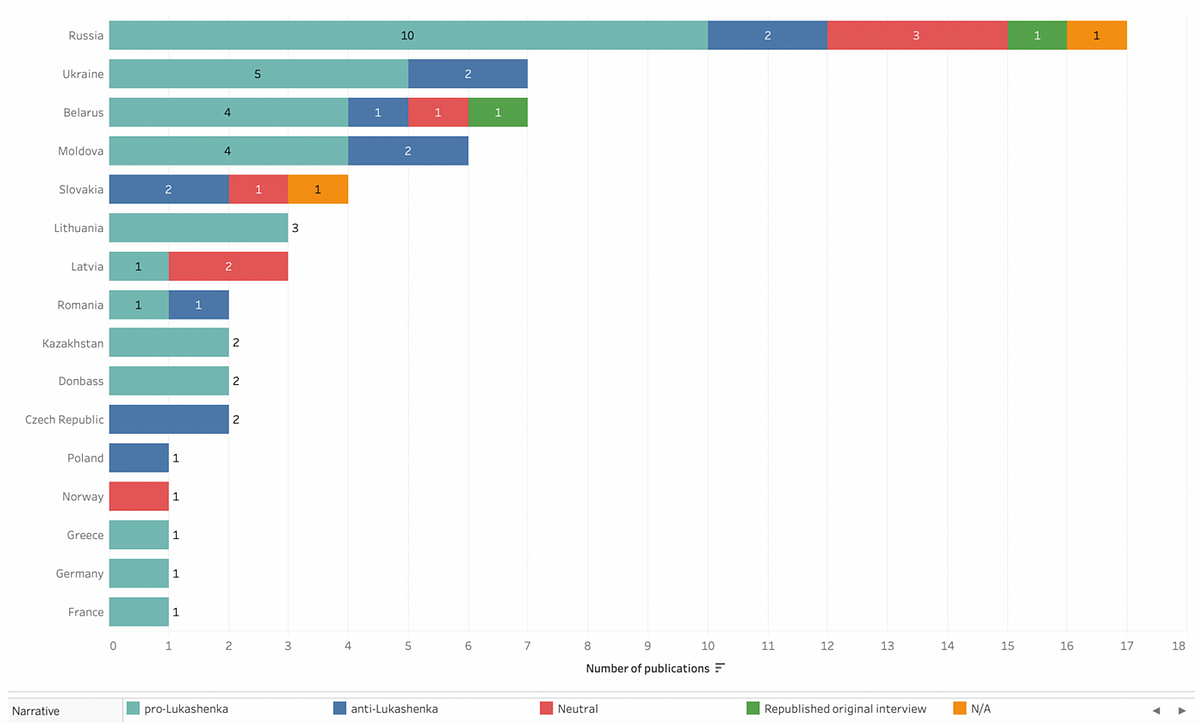
Results of the promotion campaign
Despite garnering more than 700,00 views, the interview with Protasevich was nowhere near the best performing video on ONT’s YouTube channel. It was 32nd of the 50 most viewed videos on the channel, according to Social Blade, a social media analysis tool. The video garnered a 43 percent rating, a metric derived from likes and dislikes of a video, which means that more people disliked the video than liked it.
On YouTube, ONT’s video competed with TV Rain’s broadcast, in which a TV anchor analyzed ONT’s interview with Protasevich in conversations with various experts right after the premiere of the interview. TV Rain’s video outperformed ONT’s video in terms of total views, but ONT’s video garnered over six times more social media engagement, according to BuzzSumo.
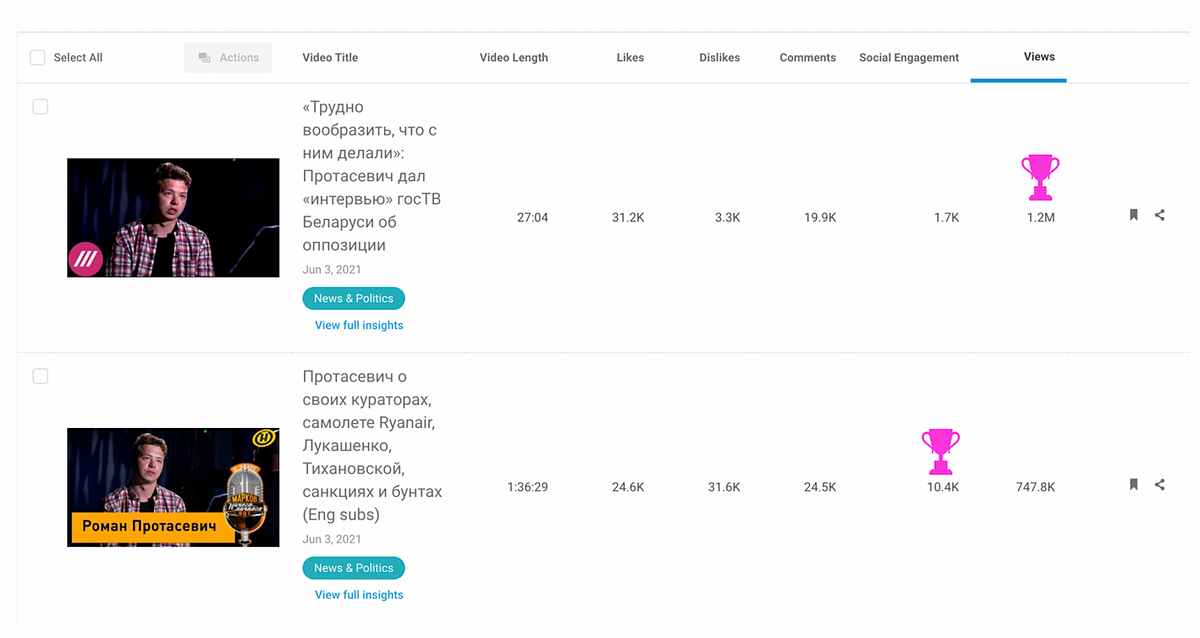
While it is evident that the interview turned into a news event, the original YouTube video and short video soundbites on social media garnered a moderate number of views. It suggests that media reports about the interview and the statements Protasevich made populated the information space and not the controversial “interview” itself.
Nika Aleksejeva is a Research Associate, Baltics, with the Digital Forensic Research Lab.
Cite this case study:
Nika Aleksejeva, “Belarusian and Russian media heavily promote Protasevich ‘interview,’” Digital Forensic Research Lab (DFRLab), June 24, 2021, https://medium.com/dfrlab/belarusian-and-russian-media-heavily-promote-protasevich-interview-203770c2b255.
Follow along for more in-depth analysis from our #DigitalSherlocks.

